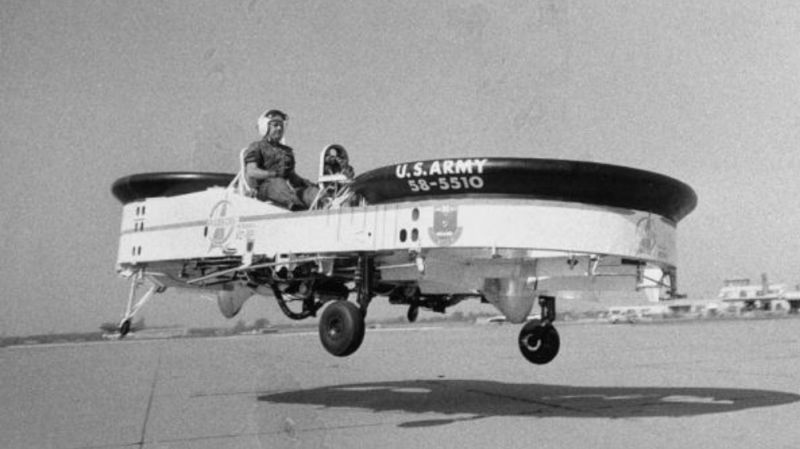
There are very few people in this world who would wonder, “what would happen if I made a jeep that could fly?” It seems more like the kind of thing you’d make a rough crayon sketch of in kindergarten than it does something someone would actually sit down and seriously draft up. But someone out there, well—they really did try it out.
According to Aviastar, Piasecki was a leading name in vertical lift research and development. They were trying to develop machines that could rise off the ground, kind of like a helicopter, but were way smaller and easier to control. That made them the perfect candidate for the US Army Transportation Research Command contract to develop what was essentially to be a flying jeep.
The Piasecki crafts weren’t the first of their kind. There had been an effort to get a flying jeep since WWII, but nobody could really figure it out. Piasecki were just the ones who actually figured out how to get the thing off the ground.
In essence, their craft was powered by two engines that powered two three-bladed ducted rotors that were connected to the same gearbox. That way, if one of the engines failed—something you can reasonably expect to happen in the battlefield—then both of the rotors would still function.
And, since you don’t really want to mess with a good thing, Piasecki made sure the controls were pretty standard. They looked mostly like what you’d find in a helicopter, so a pilot who was skilled at flying could easily take over the wheel of the so-called Model 59K Sky Car. You could control directional stability, and you’d land on three wheels.
Advertisement
The Army liked what they saw, and Piasecki rebranded their craft the Airgeep VZ-8P. It got fitted with more powerful engines approved to be up to military standard.
The first flight took place in June 1959, where it actually did make it up in the air. Everyone was so stoked that they immediately sent it out to the Navy so that they could look at it, too.
Advertisement
The Navy decided that the Army’s engine left something to be desired, so they replaced it with an AiResearch 331-6 turbine, which was lighter and more powerful.
Where the initial model had been pretty standard, the VZ-8P underwent enough changes that Piasecki started calling this new version the “B” model. Originally only having two seats, the Airgeep was now equipped with two ejector seats for the pilot and gunner, as well as three additional seats for passengers. The landing gear was upgraded significantly, and the Navy had included floatation devices in the event of a water landing.
At that point, the Airgeep was capable of flying several thousand feet in the sky as well as down near the ground—the latter being where it was assumed they’d usually be spending most of their time, since it kept them out of radar detection.
Advertisement
Out of the options that the military were considering, the Piasecki model was the most impressive. Unfortunately, the Army wasn’t quite convinced. They decided that the whole concept of a flying jeep was silly and probably wouldn’t work at all in the midst of actual combat. The whole project got scrapped, and the Army went back to focusing on developing helicopters.
Which is kind of unfortunate. I don’t know about you, but I’m still down for living in a society that has flying jeeps—even if they are impractical for military purposes.













